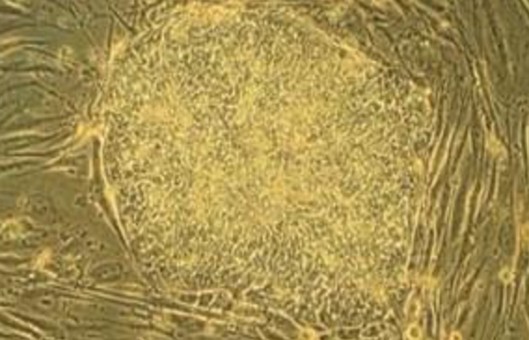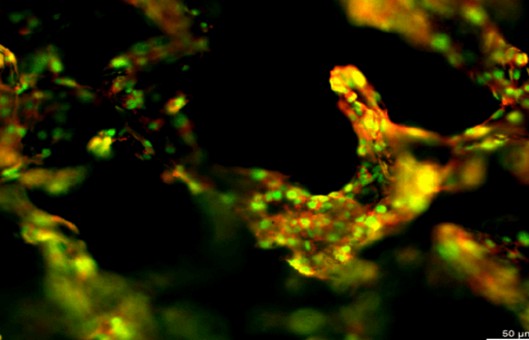Pluripotent Stem Cell-Based 3D Embryo Model
Cells. 2023 Apr 20; 12 (8): 1192.
Authors: Ávila-González D, Gidi-Grenat MÁ, García-López G, Martínez-Juárez A, Molina-Hernández A, Portillo W, Díaz-Martínez NE, Díaz NF.
INTRODUCTION
- Pluripotent stem cells (PSCs; embryonic stem cells and induced pluripotent stem cells) can recapitulate critical aspects of the early stages of embryonic development; therefore, they became a powerful tool for the in vitro study of molecular mechanisms that underlie blastocyst formation, implantation, the spectrum of pluripotency and the beginning of gastrulation, among other processes.
- Recent research demonstrated that PSCs can form 3D structures that simulate the blastocyst and gastrula stages and other events, such as amniotic cavity formation or so mitogenesis. This breakthrough provides an unparalleled opportunity to study human embryogenesis by examining the interactions, cytoarchitecture, and spatial organization among multiple cell lineages.
Human Blastoids
- hPSCs were maintained in naïve conditions (2i/LIF plus Activin and FGF2) and were then cultivated in naïve and trophoblast media in a 1:1 ratio with epidermal growth factor (EGF), the activating molecule of the WNT pathway (CHIR99021), two inhibitors of the ALK5 receptor (A-83 and SB-431542) and a histone deacetylase inhibitor (valproic acid).
- Finally, hPSCs were maintained in a hypoblast medium (FGF2, Activin A, and CHIR99021) and generated blastocyst-like structures containing an ICM either double-positive for SOX17 (SRY-box transcription factor 17) and GATA6 to identify the hypoblast or SOX2 and KLF17 (Krüppel-like factor 17) to recognize the epiblast, surrounded by external trophoblast-like cells (GATA3, CDX2, and TFAP2C positive) and with a conspicuous cavity.
Blastoids for the Study of Implantation
- Because in vivo implantation is practically impossible to study owing to the issues mentioned, blastoids manifested as an alternative to investigating cellular and molecular processes during this critical event.
- hPSCs were cultured with LIF and ERK2 (PD0325901), WNT (XAV-939), and PKC (Gö 6983) pathway inhibitors to maintain a naïve state. Then, the cells were cultivated with LIF and ALK5 receptor (TGF-β/Nodal pathway, A 83-01), Hippo pathway (1-oleoyl-lysophosphatidic acid), ERK pathway (PD0325901), and ROCK kinase (Y-27632) inhibitors to design blastoids with approximately 70% efficiency. Blastoids were deposited on an endometrial cell layer (glandular epithelial cells), which was previously stimulated with estradiol and progesterone to succeed in their adhesion and copycat implantation.
Human Embryoids as a Post-Implantation Model
- Under the premise that naïve and primed cells represent the preimplantation and post-implantation epiblast, respectively, a 3D model with primed hPSCs is designed to emulate a post-implantation embryo at 12 dpf and detected signals involved in symmetry rupture.
- Primed hPSCs were induced to form. 1) epiblast-like spheroids in 3D hydrogel culture and 2) extraembryonic-like cells (xEM) by induction with BMP4 (bone morphogenetic protein 4) and FGF2. The xEM-derived cell transcriptome exhibited an amalgam of trophoblast (KRT7, GATA3, GATA2), amnion (WNT6 "wnt family member 6," ISL1 "ISL LIM homeobox" and GABRP "gamma-aminobutyric acid types a receptor subunit pi") and extraembryonic mesoderm (GATA6, VIM "vimentin" and COL6A1 "collagen type VI alpha 1 chain") markers. Both cellular groups were integrated on low-adherence plates (one or two epiblast-like cysts with 300-500 xEM cells) to generate structures denominated “embryoids”.
- Browse our recommendations
As an established leader in the field of cell science, Creative Bioarray offers a range of high-quality products and services for our customers' research, including but not limited to the products in the table below.
| Product/Service Types | Description | Recommended Products |
| Cell Media | Cell culture media generally comprise an appropriate source of energy and compounds which regulate the cell cycle. | Stem Cells Media, Primary Cell Media… |
| 3D-based Services | 3D cell models now are increasingly needed and also employed as a significant platform in the academy and pharmaceutical industry. | 3D Cell Culture Service, 3D Cell Culture Related Products… |
RELATED PRODUCTS & SERVICES
Reference
- Ávila-González D, et al. (2023). "Pluripotent Stem Cells as a Model for Human Embryogenesis." Cells. 12 (8), 1192.

